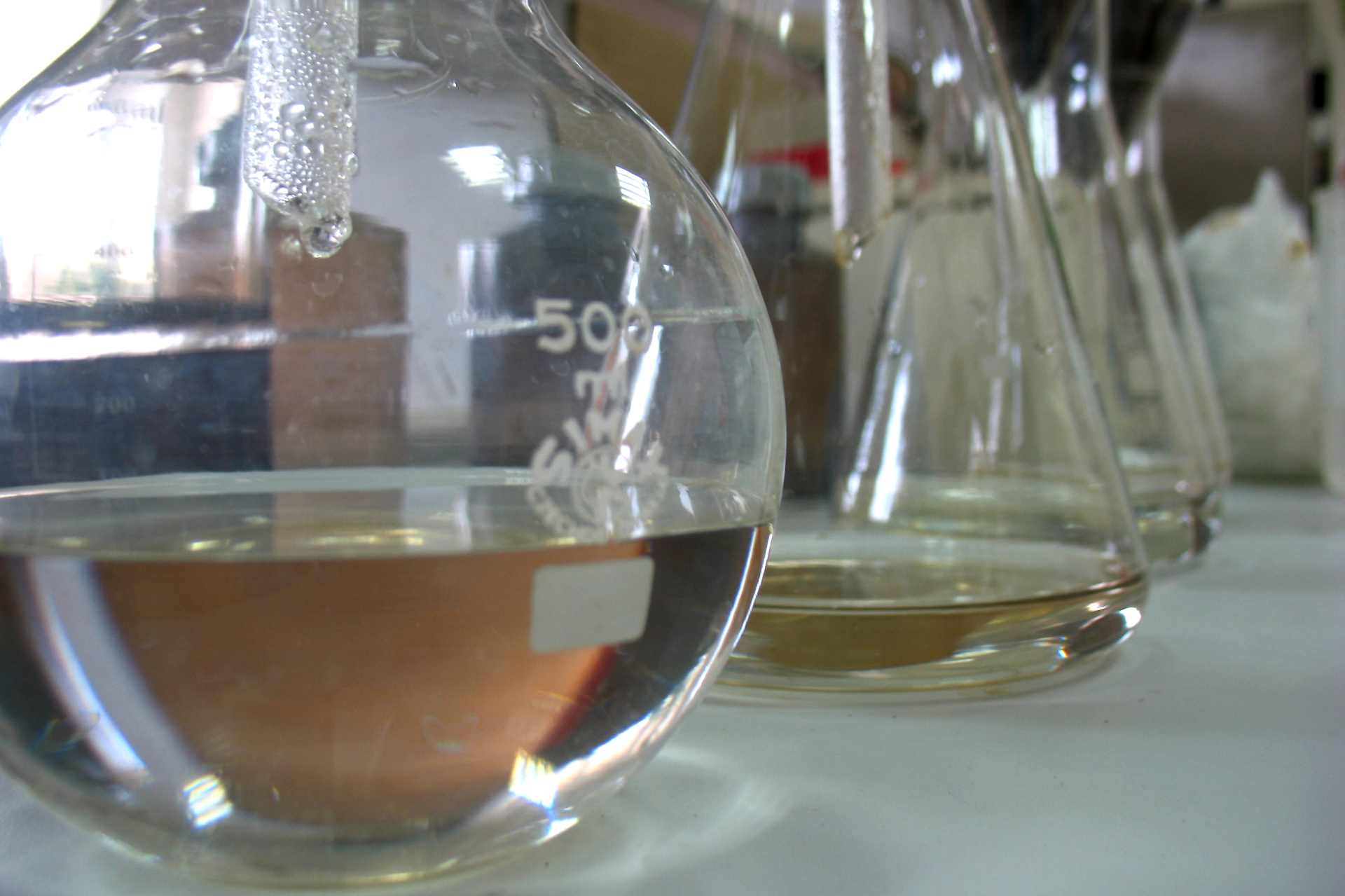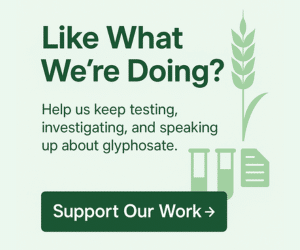We Assume They’re Testing the Whole Spray. They’re Not.
When you hear that a pesticide has been “thoroughly tested,” what do you picture?
Lab rats, long-term studies, high-powered microscopes — and regulators double-checking every detail before that product hits the market?
Most people assume the entire formulation — the actual liquid sprayed across crops, roadsides, and school fields — has been tested for safety. Not just the main ingredient, but the full mix: the active chemical, the additives, the surfactants, the so-called “inert” components that help it stick, spread, and penetrate.
But that assumption doesn’t hold up. Most of the testing and regulatory approvals are based on the technical-grade active ingredient only — not the final product sold on the shelf and used in the field. And that gap has serious implications — not just overseas, but right here in New Zealand.
Peer-Reviewed Study Reveals Major Flaw in Pesticide Safety Testing
A recent peer-reviewed study dropped a quiet bombshell:
“We discovered that pesticides have never undergone long-term testing on mammals in their full commercial formulations by regulatory authorities or the pesticide industry; instead, only their declared active ingredients have been assessed, contrary to environmental law recommendations.”
— Mesnage et al., Environmental Sciences Europe, 2025
Read that again. Not just sometimes. Never.
In other words: regulators assess only the tip of the chemical iceberg — the active ingredient on the label. The rest of the formulation, which may be more toxic than the active itself, is largely exempt from the kind of scrutiny we assume is standard.
If you’ve been following our campaign for a while, this might sound uncomfortably familiar. We’ve written before about the hidden co-formulants in Roundup®, the so-called “inert” ingredients that aren’t so inert, and the increasing scientific evidence that glyphosate-based herbicides as a whole may be more harmful than glyphosate alone.
But this new study takes it a step further — exposing just how embedded this blind spot is in global pesticide regulation.
So what about New Zealand?
Are our regulators only testing the actives too?
Are glyphosate-based products like Roundup® being approved without ever studying their full real-world effects on mammals over time?
And if that’s true — what does that mean for our food system, our health protections, and our export reputation?
Let’s unpack what’s actually being tested — and what isn’t.
What’s Actually Being Tested — And What Isn’t
The study, published in Environmental Sciences Europe, examined how pesticide products are evaluated by regulators — and uncovered a critical gap in the process.
Rather than testing the full chemical formulation that’s actually sprayed in the real world, regulatory authorities typically assess just one part: the declared active ingredient. In the case of Roundup®, that means glyphosate — on its own.
But what gets used in the field isn’t just glyphosate.
Commercial herbicide formulations are chemical cocktails. Alongside the active ingredient, they include surfactants, adjuvants, and other so-called “inert” substances — many of which don’t have to be publicly disclosed. These additional compounds are designed to help the product stick to leaves, penetrate plant cells, and last longer in the environment.
And yet, they’re rarely subjected to the same level of safety testing — particularly when it comes to long-term effects on mammals.
The researchers argue that this isn’t just a technical oversight — it’s a systemic failure. By focusing only on the active ingredient, regulators may be dramatically underestimating the toxicity of the final product. In some cases, the full formulation has been found to be hundreds or even thousands of times more toxic than the isolated active alone.
This means that the product we assume has been rigorously tested — the one sold on store shelves and sprayed across farms, school grounds, and roadways — may not have been tested as a whole at all.
It’s a gap that most people don’t know exists.
But it could help explain a lot — from the rise in chronic illnesses linked to pesticide exposure, to the persistent environmental damage observed in areas of heavy herbicide use.
And it raises a critical question:
Is New Zealand following the same flawed model — or doing something different?
Why Partial Testing Isn’t Real Safety
At first glance, this might sound like a technical issue — a minor regulatory detail buried in the fine print.
But it’s not.
It goes to the heart of how we assess risk, approve products, and protect public health.
If regulators only evaluate the active ingredient, and never test the full spray as it’s actually used, then our safety assumptions are based on an incomplete picture. That has wide-reaching implications for food safety, human health, environmental protection, and even New Zealand’s global credibility.
Let’s break it down:
Toxic Tipping Point: What Co-Formulants Could Be Doing to Our Health
Studies have shown that many herbicide co-formulants — the so-called “inert” ingredients — are not biologically neutral. In fact, some surfactants used in glyphosate-based weedkillers are toxic to human cells, and may enhance absorption through the skin or digestive tract.
Worse, when combined with glyphosate, these ingredients can create synergistic effects — making the whole formulation more toxic than the sum of its parts.
Some researchers estimate that full formulations can be 100–1000× more harmful than glyphosate alone in certain tests.
But because they’re not tested together over time, regulators may never see those risks coming.
This leaves a major blind spot in how we assess the long-term effects of pesticide exposure — especially chronic, low-dose exposure through food, water, or repeated contact.
Related reading: Roundup® Exposed: The Chemical Cocktail Behind Glyphosate’s Mask
Environmental Fallout: What the Full Spray Could Be Doing to Soil and Water
What applies to people also applies to the environment.
If full formulations haven’t been tested for long-term impact, we have little certainty about what repeated spraying is doing to soil health, insects, waterways, or microbial ecosystems.
Our article What Lies Beneath: How Glyphosate Builds Up in Soil Over Time already explores this — but it’s worth asking whether additives in the formulation are playing an under-recognised role.
Could it be that the environmental toxicity attributed to glyphosate is actually worsened — or even primarily driven — by the ingredients regulators never evaluated?
New Zealand Isn’t Exempt: And That Should Worry Us
New Zealand prides itself on clean, green values — and promotes itself as a science-based, food-safe country that exports to some of the strictest markets in the world. Regulators like the Environmental Protection Authority (EPA) and Ministry for Primary Industries (MPI) often reassure the public that glyphosate-based herbicides are thoroughly assessed and safe.
But those assurances rely on a technicality: only the declared active ingredient — glyphosate — is tested.
The rest of the formulation — the surfactants, adjuvants, and so-called “inert” ingredients that make up the full spray — are not routinely tested for long-term effects, either on human health or the environment.
There’s no evidence that New Zealand requires anything different.
Formulations are often protected as commercial trade secrets. Their full composition isn’t disclosed, their toxicity isn’t independently tested, and their long-term effects aren’t publicly monitored. Yet these are the actual products being sprayed across farms, orchards, roadways, and public spaces — and ending up in our food.
Our own lab testing has already found traces of glyphosate in NZ supermarket bread, honey, Weet-Bix, and breakfast cereals. But those results are compared only to legal limits for glyphosate itself, not for the full formulation as applied.
So when authorities say levels are “within safe limits,” we have to ask:
Safe limits of what?
If the full formulation has never been tested — and its ingredients aren’t even disclosed — then those limits may not be protecting us at all.
The Regulatory Illusion: Testing the Label, Not the Product
If New Zealand regulators were taking a more cautious approach — requiring long-term testing of full herbicide formulations, publishing safety data, or independently reviewing the toxicity of co-formulants — we’d expect to see some sign of it.
But we haven’t.
Neither the Environmental Protection Authority (EPA) nor the Ministry for Primary Industries (MPI) appear to require long-term mammalian studies on full pesticide formulations before products are approved for use. The focus remains firmly on glyphosate alone — despite the fact that most herbicide products used in the real world are complex chemical mixtures.
This isn’t just a gap. It’s a design choice.
In regulatory documents and OIA responses we’ve reviewed, glyphosate is consistently referred to as “the active ingredient of concern,” with little or no attention given to what else is in the spray. Co-formulants — including surfactants and adjuvants — are typically treated as proprietary information. Their identities are shielded. Their toxicology data is rarely, if ever, made public. And their long-term effects on health and the environment remain largely unknown.
Meanwhile, MPI sets Maximum Residue Limits (MRLs) based on how much glyphosate is expected to remain in or on food. But again, those limits are calibrated around the active ingredient — not the full formulation.
And when Roundup® is reassessed, it’s not the full product being reviewed.
That distinction matters — because the public, and even many health professionals, assume these products are tested and regulated in their entirety.
And while we often hear reassurances from agencies that everything is “within acceptable limits,” those limits are only as valid as the science they’re based on.
And that science doesn’t cover the full spray.
Built on a Fault Line: Why Food Safety and Exports Are at Risk
Most New Zealanders assume our food is among the safest in the world — that strict rules, rigorous testing, and science-backed standards ensure that what ends up on our plates won’t harm us.
And for our export markets, that assumption isn’t just about safety. It’s about brand value.
“Clean, green, and trusted” isn’t a slogan — it’s the foundation of our economic model.
But what happens when that trust is built on incomplete testing?
When residue limits are based only on glyphosate, but not the full chemical cocktail that was sprayed?
When reassessments review only one ingredient, not the total mix actually used on the crops?
When co-formulants with known or suspected toxicity are left out of the safety conversation entirely?
It’s not just a scientific gap. It’s a credibility gap.
The reality is this: international scrutiny of pesticide formulations is increasing. Major markets like the EU are beginning to demand greater transparency, more rigorous testing, and clearer disclosure of co-formulants. Several countries have already banned or restricted glyphosate-based products because of the full formulation — not just the active ingredient.
And if New Zealand continues to lag behind, we may find ourselves on the wrong side of that shift.
Exporters could face higher scrutiny. Rejections could rise.
Our food safety claims could come under question — especially if independent testing (like ours) continues to reveal residues the regulators aren’t routinely monitoring.
And for local consumers, the concern is just as real.
When we shop at the supermarket, we’re told that the food is “safe.”
But if no one’s testing what we’re actually being exposed to — the full spray — that reassurance may be based more on regulatory convenience than scientific certainty.
What Needs to Change: Before Trust Breaks Completely
If we want to take food safety, environmental protection, and public health seriously, we can’t keep pretending that glyphosate alone is the whole story.
It isn’t.
The chemical sprayed on our food and soil — and absorbed into our bodies — is almost always a formulated product. It’s glyphosate plus a mix of surfactants, adjuvants, preservatives, and other so-called “non-disclosed additives”. And right now, that full formulation is not being tested long-term by regulators or industry in New Zealand.
That needs to change.
Here’s where we can start:
Require long-term testing on full formulations — not just active ingredients.
No pesticide should be approved for use unless the full product, as sold and sprayed, has been subjected to long-term mammalian toxicity studies. Active-only testing is no longer defensible.
End the secrecy around co-formulants.
If it’s going into our soil, food, and water, the public has a right to know what’s in it. Trade secrecy should not override health transparency. All ingredients — and their toxicological profiles — should be publicly disclosed and independently assessed.
Reassess current products based on full formulations.
Products like Roundup® should be re-evaluated using up-to-date science that includes all ingredients — not just glyphosate. If the full mix poses greater risk than previously understood, then labels, warnings, and approvals must be updated accordingly.
Align Maximum Residue Limits (MRLs) with real-world exposure.
Residue limits on food should reflect the actual product sprayed — not just the active molecule. If the full formulation has more harmful effects, MRLs must be reconsidered to protect consumers, not just producers.
Stay aligned with global best practices — or risk falling behind.
As international markets move toward greater scrutiny of pesticide formulations, New Zealand must not be left behind. Our export credibility depends on it. So does public trust.
These are not radical demands.
They’re just common sense.
You can’t assess the safety of a product you’ve never actually tested.
And you can’t claim to protect public health if the most toxic ingredients are never even looked at.
Tested, Trusted — or Just Assumed Safe?
It’s easy to assume that regulation means protection.
That if something is on the shelf, it’s been thoroughly tested.
That when a government agency says it’s safe, it must be.
But the reality is murkier.
In New Zealand — just like in many other countries — the pesticide being sprayed is not the one being tested. Only a fraction of it is. The rest? Treated as irrelevant, proprietary, or invisible.
That disconnect should concern all of us.
Because it’s not just about glyphosate anymore. It’s about a system that routinely separates what’s used from what’s tested — and then presents the results as reassurance.
This isn’t just a loophole.
It’s a regulatory blind spot that’s been baked into the system for decades.
And as more science emerges, and more consumers start asking questions, the pressure is growing. Not just to reassess glyphosate — but to rethink how we evaluate chemical safety at all.
The question now is whether New Zealand is willing to face that reality — or continue pretending that partial testing offers full protection.
We’ll be watching.
And we won’t stop asking the questions that others avoid.
Resources & References
This article is just one piece of a much bigger puzzle. If you’re wondering how we got here — or where the cracks in New Zealand’s chemical safety system really start to show — the following articles and resources will help connect the dots.
Some expose what regulators aren’t telling us.
Others highlight the science we’re choosing to ignore.
All of them point to one conclusion:
It’s not just about glyphosate. It’s about the system that keeps looking the other way.
Key Study
Scientists’ warning: we must change paradigm for a revolution in toxicology and world food supply
Mesnage et al., 2025
This peer-reviewed study revealed that pesticide regulators have never required long-term testing of full herbicide formulations on mammals — only the declared active ingredients.
Related Articles on NoMoreGlyphosate.nz
Roundup® vs Glyphosate: Why It Matters
Not all glyphosate-based products are created equal. This article explains why the formulation matters — and why “glyphosate safety” claims may be misleading.
Roundup® Exposed: The Chemical Cocktail Behind Glyphosate’s Mask
A deeper look into the hidden ingredients inside Roundup® — and the evidence that these so-called “inerts” may actually be more harmful than glyphosate itself.
The Hidden Dangers of Roundup: Why “Inert” Ingredients Matter
Co-formulants in herbicides like Roundup® aren’t disclosed on labels — but emerging research shows they could pose serious health and environmental risks.
What Lies Beneath: How Glyphosate Builds Up in Soil Over Time
Regulators claim glyphosate breaks down quickly — but studies (and soil tests) suggest it may linger far longer than expected, with compounding impacts.
Glyphosate and Food Safety Monitoring in NZ: What’s Missing?
Our food safety system may not be looking for what matters most. Here’s how New Zealand’s monitoring of glyphosate residues could be missing the bigger picture.
Why Raising MRLs Threatens Public Health
When residues exceed the legal limit, regulators tend to raise the limit — not restrict the chemical. This article explores how MRLs drift to match industry practice.
New Zealand’s Chemical Monitoring Gaps Exposed
What a taxpayer-funded report revealed — and why the government sat on its findings. A look at the systemic failings in New Zealand’s approach to chemical oversight.
NZ Chemical Reform: A Missed Opportunity
When the chance came to overhaul outdated chemical regulation, our government chose inaction. What that means for public safety and long-term accountability.
Because Ignorance Isn’t a Safety Standard
If our government isn’t testing the full spray…
If our food standards ignore co-formulants…
If our residue limits follow industry use, not public health…
Then it’s not science we’re following — it’s convenience.
These aren’t just technical gaps. They’re systemic failures.
And until we demand better, we’re all being asked to trust a safety story that was never fully tested.
Image Source & Attribution
We’re grateful to the talented photographers and designers whose work enhances our content. The feature image on this page is by Caryll.




